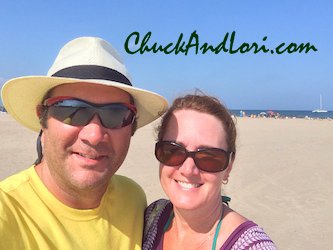Berlin is a modern, cosmopolitan city filled with culture, art, and sausages.
This was our first visit to Berlin. In fact, it’s been 14 years since we’ve been to Germany at all. After a week in Berlin, we’ve decided that’s way too long. The first afternoon of walking around in Berlin, Lori turned to me and said, “I like it.”
Indeed.
Berlin is modern because, well, we bombed the hell out of the city back in World War II. It’s surprising there are any buildings more than fifty years old left standing, but there are enough to provide a curious mix of old and new. It’s a cosmopolitan city with dozens of museums and art galleries and shopping and a surprisingly youthful vibrancy that seems to say, “Brussels may be the political capital of the EU, but we’re the de-facto economic capital.”
My first impression of Berlin is: it’s a lot like London at half the cost.
It was particularly nice that we arrived at the onset of the Advent season. Christmas decorations and a giant tree greeted us at the train station. Our first sight to see was the Gendarmenmarkt, a square between two majestically-domed churches that is, for the season, filled to capacity with a Christmas market. We were in Berlin hardly two hours and we were already swimming in German Christmas market traditions, including a life-sized crèche, a stage of children singing carols, gluhwein (Germany’s spiced holiday wine, in both red and white varieties, served hot), tasty wursts (sausages, of course), cabbage, potatoes, waffles covered with chocolate and other divine goodness, and fruity strudels. Put “Christmas markets in Germany” on your bucket list if it’s not there already.
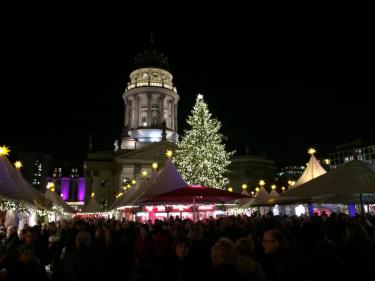
Berlin Christmas Fair at Gendarmenmarkt
It just doesn’t seem right to devote only a single blog to our week in Berlin, but we’re in blog catch-up mode so that’s what you get. With a week in a city we’ve never seen, we decided to buy the Berlin Museum Pass, a 3-day card that gets you into any of over 50 of Berlin’s museums in a 3-day period. As a rule of thumb, the card is worth it if you plan to see 3 or more of the listed museums. Tip: plan your first museum visit to a lesser-visited museum (like the Museum of Natural History) where you can buy the pass with nary a wait in line.
There’s actually a competing Berlin Welcome Card with a different list of included attractions, some in common, some not. If you’re interested more in seeing Berlin’s museums, go with the Museum Pass; if you want to see more of Berlin’s palaces, go with the Welcome Card (we decided to save that for next time).
So with 7 days, 3 of which had to be crammed with museum visits, here are the highlights of what we managed to see.
Alte Nationalgalerie – The “New National Gallery”, this was one of the museums we wouldn’t have visited except that we had our museum pass, we were standing in front of the place, and they hadn’t yet closed. This is Berlin’s art museum from post-renaissance through impressionism and up to, but not including much, modern art. Lori was in art heaven with their collection of Monets and Manets and Gaugins and Van Goghs and … you get the idea. Bonus question worth 5 points: can you name a German impressionist? See footnote 1 for a suggestion.
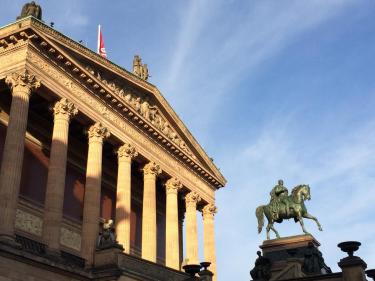
The Alte Nationalgalerie
Berlin Cathedral – More formally known as the Deutsche Dom (literally, “German Dome”; not very creative, but Germans aren’t famous for creative embellishment), the cathedral is conveniently located on Museum Island adjacent to several of the museums you’ll see if you’re following our list. There’s an admission cost to go inside, but it’s a great candidate for a walk-by site for the cheapies out there.
Berlin Wall Memorial – Technically we didn’t actually go to the real Berlin Wall Memorial, but there’s hardly any need. Just walk around Berlin for a few days and you’ll find remnants of the wall turned into small, local memorials, like this one we found at Potsdam Platz.
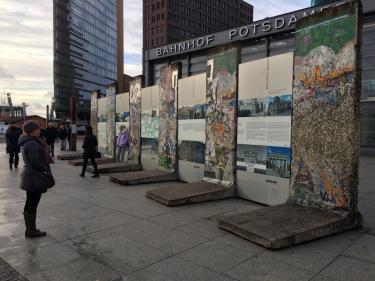
Bode Museum – Another of the museum pass museums we wouldn’t have seen if we didn’t have the museum pass, the Bode museum is mainly a collection of byzantine religious art, with many altarpieces and triptychs, as well as sculpture. They also have an interesting collection of coins from throughout human history. The building itself, with its massive copper (or is it bronze?) dome is worth a walk-by if nothing else.
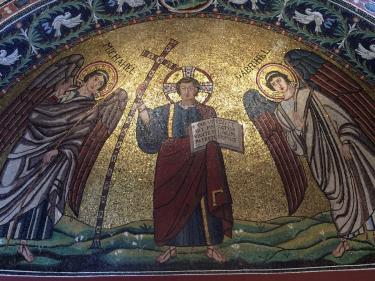
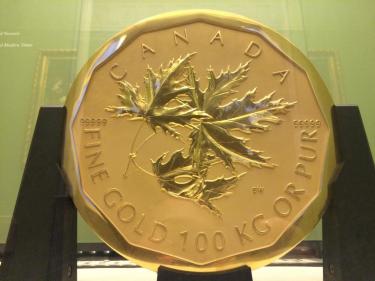
Top: reconstructed semi-dome from a Byzantine church; Bottom: a $1M Canadian dollar gold coin, about 18″ in diameter (few vending machines accept it)
Brandenburg Gate – A Berlin landmark built in 1791 by King Frederick William II of Prussia as a peace monument (put your own snide comment on the irony here), the Brandenburg Gate and its horse-drawn chariot was severely damaged during World War II. Throughout the cold war it stood nearly derelict alongside the Berlin Wall. Today it is an impressive monument to a unified Germany.
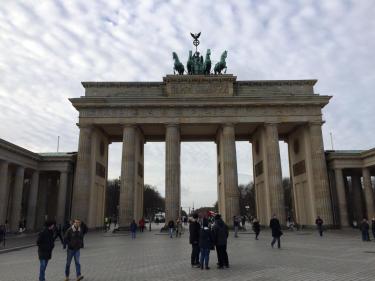
Checkpoint Charlie – The real cold war icon was actually torn down, but this rebuilt replica is worth a photo opp. There’s a nearby Checkpoint Charlie Museum, but we skipped it as it was not on the Museum Pass.
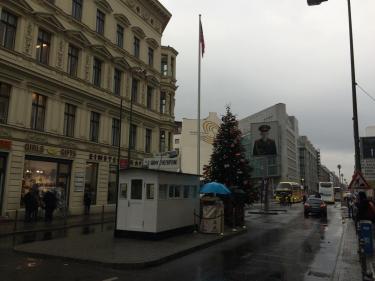
Checkpoint Charlie (reconstructed); we felt compelled to run past it
Holocaust Memorial – More somberly known as the Memorial to the Murdered Jews of Europe, this is not only a memorial but a museum. A massive city block is covered with nearly 3,000 concrete stelae, slabs reminiscent of mausoleums. Wander through this “city” of concrete slabs to find the entrance to the underground museum. It is both heartbreaking and sobering.
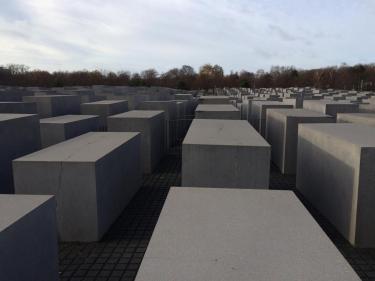
Natural History Museum – The “Museum für Naturkunde” is a great museum if you have younger travelers with you (or if you like dinosaurs and icky stuff). The central hall is filled with dinosaur skeletons, including the largest specimen on display in the world (what dinosaur people used to call a brachiosaurus, now they call it something else because dinosaur people are a restless, unsatisfied folk). There are also numerous displays on geology and space, but the other don’t-miss is the collection of “wet” specimens, guaranteed to elicit a few “ewws”.
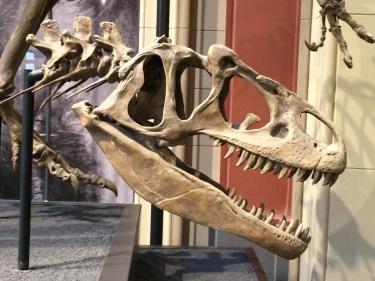

Top: Uh, it’s a dinosaur skull. Bottom: Eww factor at the so-called wet collection.
Neues Museum – The Neues Museum is the “New Museum” in Berlin. Ironically this museum houses Germany’s principle Egyptian and pre-history collection (so only the building is new). Their centerpiece is the colorful bust of Nefertiti. Please note that photos aren’t allowed of the bust, even if you stand just outside the room and try to take a photo looking back in. You will be subject to some old guy admonishing you in German, which can be scary for various historical reasons. To get back on good terms with him, learn how to properly pronounce Neues: say “noise”, but without drawing out the end, something like “Noice”.
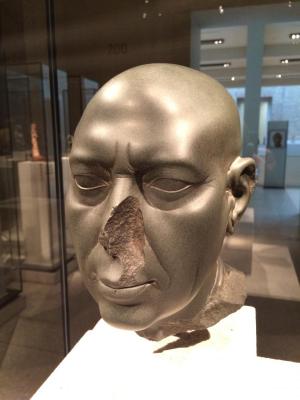
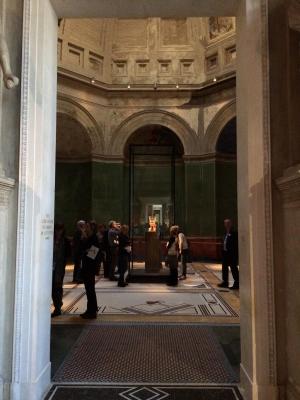
Top: Exquisite ancient bust of a bald Egyptian dude; Bottom: The bust of Nefertiti, just before the hammer of German discipline fell on this photographer
Pergamon Museum – One of the most popular of Berlin’s museum, the Pergamon is also dedicated to ancient history, but unlike any other museum in the world (that we’re aware of), it contains full-size reconstructed ancient architectural sites. It gets its name from the Pergamon Altar, which is its principle artifact, though that exhibit was closed when we visited. Still, the Ishtar Gate from Babylon and the Roman Market Gate of Miletus are impressive.
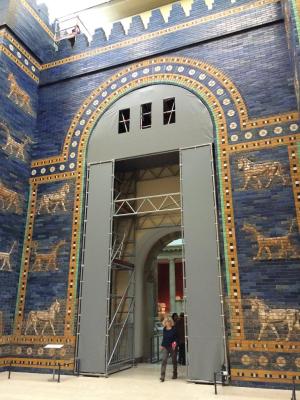
The Ishtar Gate; not a great photo, but does demonstrate the gate is stil usable today, a testament to Babylonian architectural prowess
The Reichstag – This landmark building was once the seat of German government, the Imperial Diet. After a fire in 1933, it fell into disuse. It remained derelict throughout the cold war, but a refurbishment began in the 1960’s, and full restoration began after German reunification in the 1990’s. Today it once again is the seat of German government as the home of Germany’s unified parliament, the Bundestag. It’s worthy of a walk-by if nothing else, and if you want to go to the top and see the impressive modern glass dome, as we wanted to (but didn’t), book well in advance. Another way to see the dome is to book reservations at the café: but call, don’t rely on them to reply to your email reservation request (because they won’t, as we learned).
Saint Nicholas Church – This is billed as the oldest church in Berlin, but as it was reduced nearly to rubble during WWII, it’s almost entirely reconstructed. Still, the site is historical and the museum is interesting.
1 – Max Leibermann. Here’s his self-portrait:


